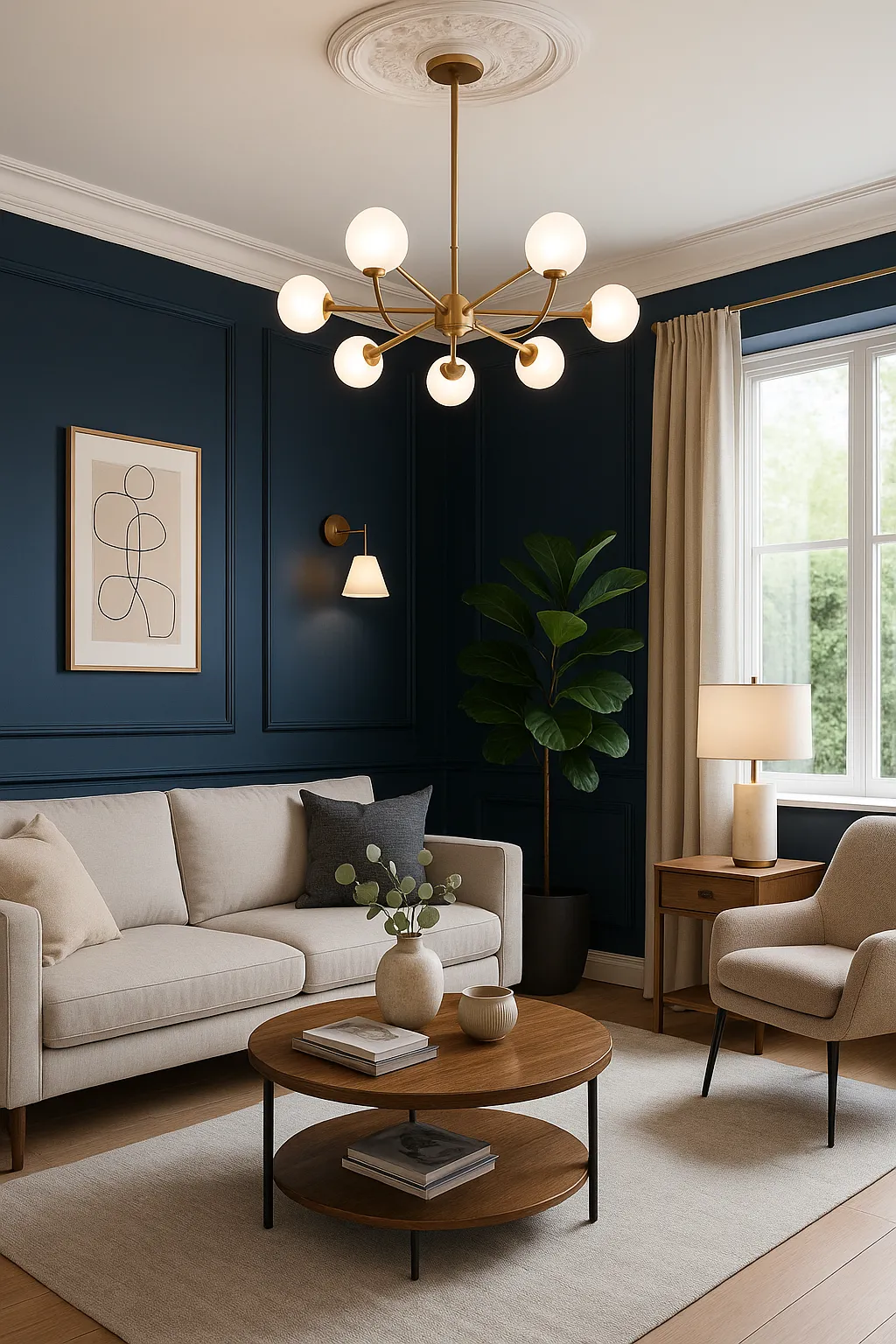Lighting is more than just a practical necessity—it’s one of the most powerful tools in interior design. Decorative lighting, in particular, plays a crucial role in creating atmosphere, highlighting design features, and adding a touch of personality and elegance to your space. Whether you’re aiming for cozy and warm or modern and dramatic, the right lighting can transform a room. In this guide, you’ll learn how to use decorative lighting to elevate your interiors, enhance functionality, and express your unique style.
Understand the Three Layers of Lighting
Before diving into decorative lighting specifically, it’s important to understand the basic layers of lighting that make a room feel complete:
1. Ambient Lighting
This is your general, overall light—typically ceiling-mounted fixtures, chandeliers, or recessed lighting.
2. Task Lighting
Focused lighting that helps with specific activities, like reading, cooking, or working. Think desk lamps, under-cabinet lights, or vanity lights.
3. Accent/Decorative Lighting
Used to highlight architectural features or decor, and to add beauty and atmosphere. This is where style meets function.
Decorative lighting often overlaps with accent and ambient lighting, adding both form and function.
Choose Fixtures That Reflect Your Style
Decorative lighting is a great opportunity to show off your design taste. The fixture itself can serve as a statement piece, just like a sculpture or artwork.
Style Ideas:
- Modern: Sleek pendant lights with metallic or matte finishes.
- Boho: Woven rattan or beaded chandeliers.
- Industrial: Exposed bulb fixtures with black or brass finishes.
- Classic: Crystal chandeliers or traditional lampshades.
- Scandinavian: Minimalist, natural-toned designs with clean lines.
Choose lighting that complements your space’s overall aesthetic to create a cohesive look.
Use Statement Fixtures to Anchor a Space
A striking decorative light fixture can serve as the focal point in a room. It anchors the space and draws the eye upward or toward the center.
Statement Lighting Examples:
- A dramatic chandelier above the dining table.
- A sculptural pendant light over a kitchen island.
- An oversized floor lamp in the living room.
- A unique bedside sconce as an alternative to a table lamp.
Make sure your statement piece has enough visual weight and the right scale for the room.
Layer Lighting for Depth and Mood
Great interior design uses lighting at multiple levels to create a balanced and dynamic environment. Decorative lighting adds warmth, contrast, and visual texture.
Layering Tips:
- Combine a chandelier with wall sconces and table lamps.
- Use floor lamps to soften dark corners.
- Add LED strips behind mirrors, under shelves, or along architectural lines.
This multi-source approach creates ambiance and ensures functionality throughout the space.
Highlight Architectural Features and Artwork
Use decorative lighting to showcase what makes your space unique. It can accentuate textures, shapes, and focal points you want to highlight.
Accent Lighting Ideas:
- Wall-mounted picture lights above framed art.
- LED strip lights under floating shelves or inside niches.
- Uplights that cast shadows on textured walls.
- Recessed spotlights to emphasize a feature wall or fireplace.
This subtle lighting adds sophistication and a museum-like feel to your home.
Consider Light Temperature and Dimming
The color and intensity of light greatly influence mood and aesthetics. Decorative lighting should feel good as well as look good.
Temperature Tips:
- Warm white (2700–3000K): Best for living rooms, bedrooms, and cozy spaces.
- Cool white (3500–4100K): Suitable for kitchens and workspaces.
- Daylight (5000K+): Clean and crisp, but best used sparingly.
Use dimmers on decorative fixtures when possible to control the mood throughout the day and night.
Mix Materials and Finishes
Mixing different lighting materials and finishes adds interest and richness to your design. Decorative lighting doesn’t have to be matchy-matchy to feel cohesive.
Materials to Mix:
- Metal and Glass: Sleek and modern.
- Wood and Fabric: Soft and natural.
- Wicker and Brass: Warm and textural.
- Marble and Chrome: Elegant and bold.
Let lighting add a new dimension to your space’s material palette.
Use Lamps as Decor
Table and floor lamps are among the easiest decorative lighting pieces to incorporate—and they do double duty as design accents.
Lamp Styling Tips:
- Choose lamps with sculptural bases or unique shades.
- Use matching or complementary pairs for balance in a bedroom or living room.
- Place lamps on entryway consoles, side tables, or bookshelves.
- Coordinate lamp colors or textures with nearby pillows, throws, or art.
Don’t underestimate the styling power of a great lamp.
Don’t Forget the Ceiling and Walls
Often overlooked, the ceiling and walls are great places to make lighting a design feature.
Overhead and Wall Fixture Ideas:
- A decorative ceiling medallion paired with a vintage chandelier.
- Wall sconces that frame a mirror or bed.
- Ceiling lights with colored shades or geometric designs.
These fixtures not only provide light but also add architectural interest.
Final Thoughts: Let Light Tell Your Story
Decorative lighting is the perfect marriage of beauty and function. It elevates your space, highlights your favorite features, and brings warmth and emotion to every room. Whether you prefer subtle elegance or bold statements, the right light fixture can express your style, enhance your mood, and transform how you experience your home.
Think of lighting as a layer of your interior design—not just an afterthought. With thoughtful placement and styling, it becomes an essential part of your space’s story.
